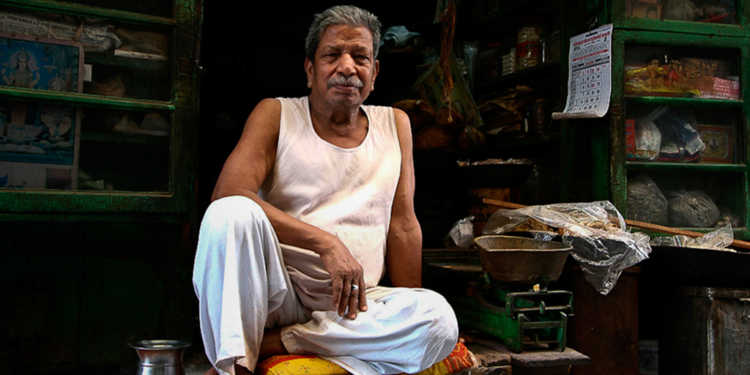I was visiting my hometown after a gap of 2 long years and my excitement obviously had no bounds. Apart from being excited to see my parents, spend a few days at the home I grew up in, and many such things, I was thrilled to finally get the chance to put an end to my long standing cravings for Shiv’s (name changed) kachori – a spicy snack hugely popular in north India. I am sure you all have been at least one – may be many – such place/s. That mom-and-pop kind of place in some old nook of the town, serving the most delicious food in the world.
So, without wasting much time, here I was, on my first day in town, at Shiv’s. It’s a food cart on street (just like the ones you see in most food shows about India). While patiently waiting for my turn, I couldn’t help but notice how many times Shiv (the owner) was interrupted by constant barrage of calls on his two phones (an iPhone 6s and a Samsung Galaxy Note). Thankfully, these calls didn’t come in the way of me and my kachori because Shiv was not directly involved in the process. Mostly, he was coordinating and fine tuning a very smooth running assembly line involving multiple workers (I counted at least 6), producing kachoris, samosas, bhaturas, etc. by the dozens. Being the son of a Punjabi businessman, I am wired to start crunching numbers in my mind once I see a successful business running. How many kachoris he must be selling everyday, how many samosas, what is he paying monthly to his workers, what is he paying to the local policeman, etc. Suddenly, I was happily interrupted by my kachori plate and the next 5 minutes were pure bliss.
Anyhow, I continued my calculations on my way back. Shiv starts at 7 am and runs out of his raw material usually by 1 PM. He sells at least 1000 kachoris everyday. At ₹10 per kachori, that’s ₹10000. Add all the other stuff (samosas, bhaturas, etc.) and even by the most conservative estimates, he is making sales worth at least 20000 everyday. He takes one day off in the week so his monthly sales must be around 500,000 rupees. Although, I believe that his actual costs would be much lower but let’s assume that they are around 50% (wages to his workers, rent/bribe, raw material etc.). Wow, Mr. Shiv is earning ₹250,000 every month; No wonder he has two of the most costly smartphones. A small business owner earning good money through some old-fashioned hard work and making a lot of people happy in the process. That’s great.
But wait, he earns more than most white-collar workers do in India, what kind of taxes is he paying? Does he pay any tax at all? I had to know.
I have many relatives who, unlike me, stayed in family businesses. I know for a fact that they are earning up to ₹ 500,000 every month. When I casually asked one of my cousins about his taxes, he dillydallied, but after constant probing he gave up. He told me that he under reports his income by 90% and that’s usual practice with all the small-medium business owners he knows.
Now, a moderate size tier 3 city has thousands of such people running unorganized/semi-organized businesses. Imagine, how many are there across India – hundreds of thousands. Don’t get me wrong; I am not saying all businessmen are cheats. There must be a small % of people who pay every penny they are suppose to, but all my instincts and experiences tell me that number is low. I am also not claiming that all working class people are ideal citizens. The difference is that for them, income tax is deducted from their salaries even before they get it. Given a chance, I am sure an equal % of salaried people would under report their income.
Government data shows that only 1% of Indians pay income tax. Now, why is that? What does that say about us as people? Can you put the blame solely on citizens?
When I asked my cousin why he doesn’t pay his full taxes, he retorted – “us se kya hoga, jitna dete hai wo sab ye neta khaa jaate hai…aur denge to wo bhi khaa jaayenge” (What difference will it make? Whatever we give, goes into the pockets of politicians. Even if we pay more, they will snatch that too). He is not completely wrong. Rajiv Gandhi once famously said that only 15% of the government money reaches the common man. Widespread corruption at every level of government is a fact of life so it’s no surprise that common people do not trust the government with their hard earned money.
The way I see it, this deep-rooted mutual lack of trust and respect between the government and the people has formed a vicious circle of mistrust. Imagine what can happen if we can somehow break this circle. Imagine what can happen if, instead of 1%, 50% of Indians start paying their taxes and instead of just 15%, 75% of the government money is used for the benefit and convenience of the common men. 100% tax collection and 0% corruption is only possible on Mars; there will always be some leakage, but these are very realistic numbers. So, the government would collect 50 times more and of the collected money, spend 5 times more. Effectively, the total money spent on public infrastructure & services would be 50 X 5 = 250 times more.
Imagine, what if our roads were 250 times better, our public hospitals were 250 times better, our government schools were 250 times better. If only we were to break that circle of mistrust.































